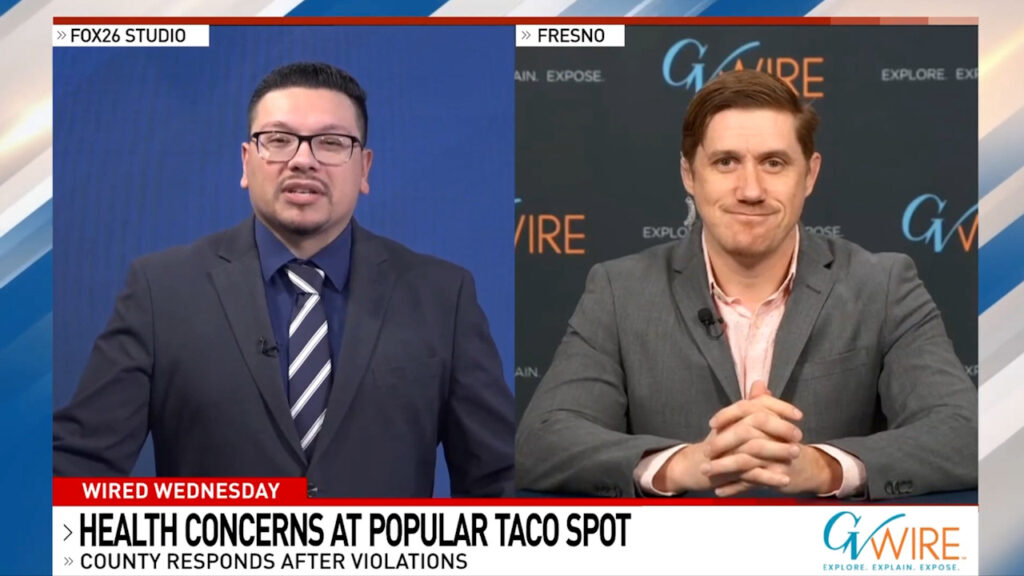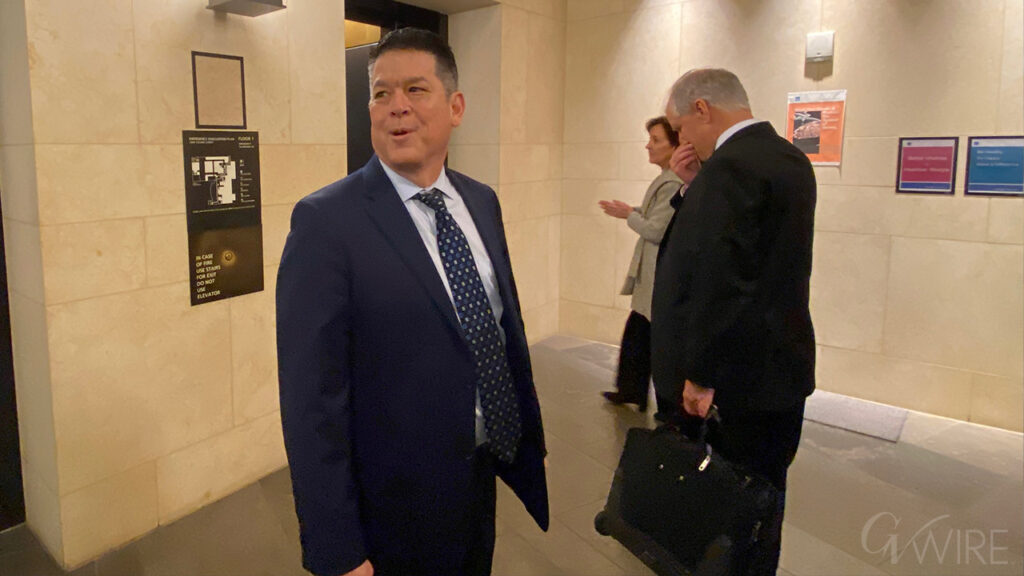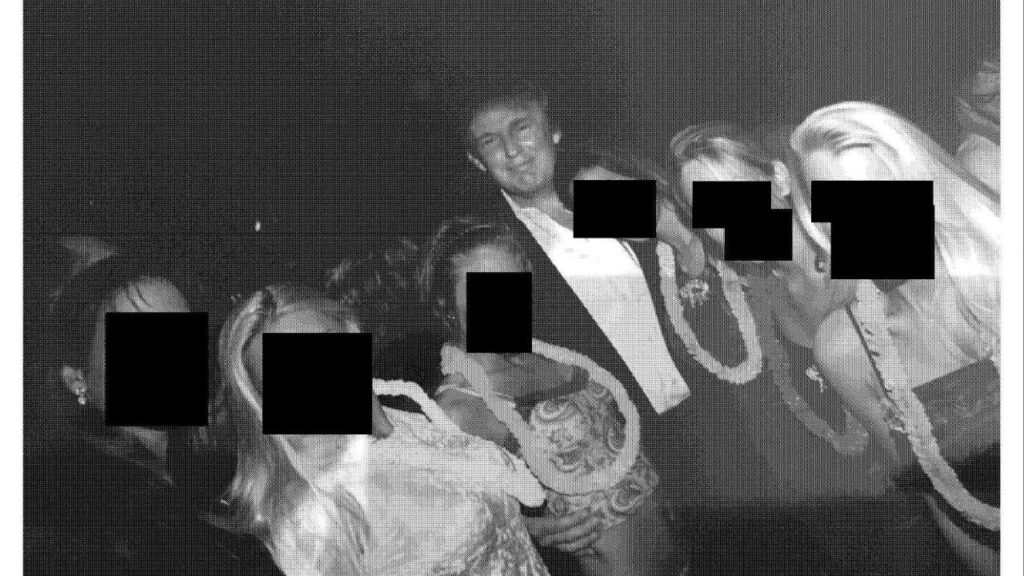Analysis of protest effectiveness reveals nonviolent movements consistently outperform violent ones in achieving political goals. (GV Wire/Eric Martinez)

- Research shows nonviolent movements are twice as likely to succeed as violent ones.
- State violence against peaceful protesters often mobilizes opposition and erodes legitimacy.
- Violent protest tactics typically reduce popular support for movements and their causes.
Share
For Saturday’s No Kings protests, an estimated five million people marched in over 2,000 cities and towns. The marches were a striking display of nonviolent dissent amid an increasingly volatile political environment.
Together with the military deployment in Los Angeles and the military parade that President Trump presided over in Washington, these events showcase how the strategic use or rejection of force could shape months, even years, of mass protest as well as the future of American democracy.
History and research make clear that violence seen as unnecessary — whether from the state or protesters — typically reduces popular support for the political players who use it. The public’s rejection of violence they view as unjustified is consistent — so much so that it often elicits complex strategic games, with movements and the state maneuvering to portray the other as unnecessarily violent. Still, important exceptions exist, and understanding when and why nonviolence wins hearts and minds requires understanding the vast research on the topic.
Research Shows State Violence Against Peaceful Protesters Often Backfires
Cross-national research by Maria Stephan and Erica Chenoweth finds that when states crack down violently on nonviolent protest, it often backfires. Rather than quell dissent, repression can mobilize opposition and erode the government’s legitimacy. Other scholarship suggests that when state officials use excessive force against peaceful protesters — such as when the police commissioner Bull Connor in 1963 blasted civil rights activists with fire hoses in Birmingham, Ala. — the images generated can be particularly effective for movements.
These findings suggest the more force the state uses on peaceful demonstrators, the more the state may inadvertently fuel precisely the kind of mass opposition it seeks to suppress.
For the Trump administration, last week’s deployment of National Guard troops and Marines in response to demonstrations in Los Angeles — some of which involved protester violence — offered both opportunities and risks. Research finds that authoritarian regimes often provoke and capitalize on violent conflict with activists to justify strict policing of protest and manufacture a domestic “rally round the flag” effect. At the same time, reports of federal agents in armored vehicles and at least 35 documented assaults by law enforcement on journalists could lead the mass public to view Mr. Trump’s policies as excessive.
Indeed, polling from last week suggests U.S. adults do not like Mr. Trump’s approach. In particular, AP-NORC and Washington Post-Schar School polls suggest noticeable drops in voters’ estimation of his policies, especially on immigration. While Mr. Trump’s strongman response to the Los Angeles protests plays to his base, it may also have helped motivate more people to attend Saturday’s No Kings protests.
Violent Protest Tactics Often Backfire for Movements
A range of research, including our own, shows that violent tactics used by protesters often backfire, too. Looking at thousands of events in the 1960s, one of us (Dr. Wasow) found that counties exposed to Black-led nonviolent protests shifted toward the Democratic Party. Analyses of newspaper coverage and public opinion showed that nonviolence was especially effective when the police and vigilantes responded violently. But when protesters turned violent, white voters were more likely to embrace “law and order” Republicans, helping to swing the 1968 presidential election toward Richard Nixon. In surveys, among Democratic voters who switched from supporting Lyndon Johnson in 1964 to Richard Nixon in 1968, one of the best predictors of party defection was negative attitudes about civil unrest.
Dr. Chenoweth and Dr. Stephan analyzed more than 300 campaigns from 1900 to 2006 and found that eschewing violence was more effective for movements. Nonviolent movements were about twice as likely to succeed as violent ones, largely because a commitment to nonviolent action allowed them to recruit a broader base of support and provoke defections from the opposition.
Additionally, a set of experiments conducted by one of us (Dr. Willer, with Matthew Feinberg and Chloe Kovacheff) found that protest actions that are seen as harmful to others or highly disruptive to social order (or both), such as property destruction and shutting down highways, tend to reduce popular support for protest groups on the left and the right.
This broader class of protest actions also often eroded support for the protesters’ central cause and policies. In one case, it was found that the use of extreme protest tactics by anti-Trump protesters actually increased popular support for Mr. Trump.
Understanding the Exceptions and Strategic Implications
There are notable exceptions to these patterns. Research on the violent protests in Los Angeles in 1992 found that proximity to the protest, in the context of other factors — such as the video of brutal police violence used against Rodney King — motivated people to register to vote and turn out at greater rates for years after. Other scholarship finds protester violence can amplify awareness of a cause among the coalition most closely aligned with the movement.
Still, most of the evidence suggests that large-scale protester-initiated violence tends to push potential allies away.
Some people have argued that regardless of activists’ intentions, actions like vandalism and property damage can never be wholly eliminated, as opportunists with little meaningful connection to the movement often interlope on protests. Some further argue that a radical fringe of a movement can make the movement’s mainstream more attractive to the general public by contrast.
But while one of us (Dr. Willer, in research with Brent Simpson and Matthew Feinberg) has found evidence for such a “radical flank effect,” it requires that the public is able to differentiate the radical from moderate factions to begin with — discernment that may be impossible in a large, chaotic street protest. To achieve such a contrast when violence crops up, protesters should resist the temptation to justify violence, instead communicating a cleareyed focus on the movement’s goals and its commitment to taking broadly inclusive, nonviolent action to achieve them.
Much depends on what the public sees and believes. As the political scientist Christian Davenport has argued, contentious events are experienced through a kind of Rashomon lens, where each side sees something different. Protesters focus on repression. Those opposed see threats. Politicians reinforce these differing interpretations, and media often privilege elites’ official voices while minimizing those demanding change.
In societies that have a reasonably free press, a persuadable bloc of citizens and free and fair elections, the historical, psychological and political evidence shows that movements are most effective when they remain nonviolent and build broad coalitions. And governments are most vulnerable when their use of force is perceived to be excessive or cruel.
—
This article originally appeared in The New York Times.
By Omar Wasow and Robb Willer
c. 2025 The New York Times Company



















